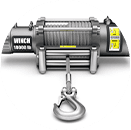WELCOME TO
BORGMAN ATHLETICS GROUP
Borgman Athletics Group is your one stop shop for all your indoor and outdoor athletic needs. We have you covered for all Installations, Inspections, Service Repairs and Preventative Maintenance on ALL of your athletic equipment ranging from Indoor / Outdoor Basketball Backstops, Bleachers, Scoreboards, Wall Pads, Field Netting, Batting Cages, Wrestling Mat Hoist, etc. The list goes on and on so please email us or call us with any questions and we will be happy to help you. Thanks for checking out our website and we look forward to working with you!











